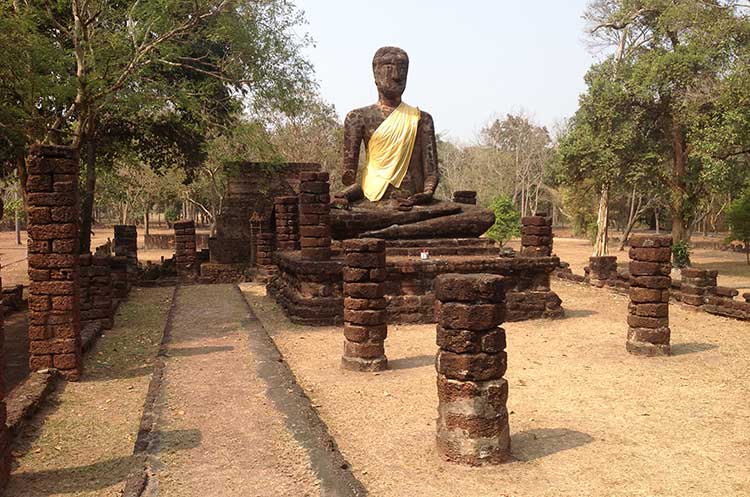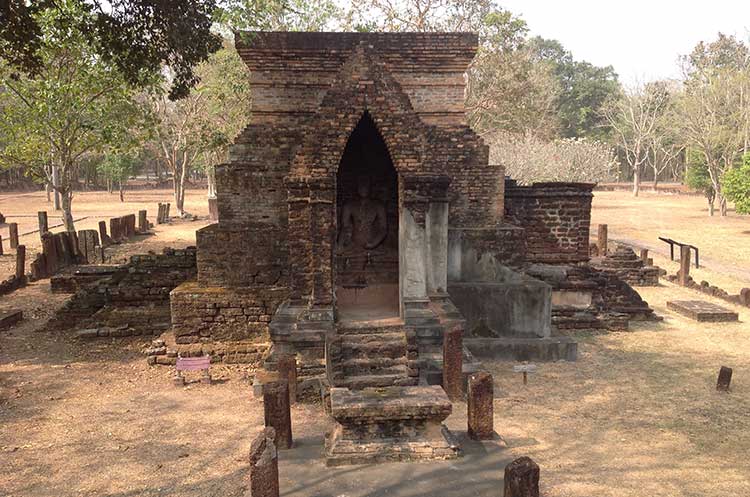
Wat Singha
“Temple of the lions”
The Wat Singha is an ancient temple in the forested hilly area known as Aranyik, North of the walled center of town. The temple was founded in the 15th or 16th century.
Wat Singha translates to “temple of the lions”. The temple derives its name from the lion statues that used to adorn the front of the base supporting the viharn.
The rectangular area oriented towards the East was enclosed by a boundary wall of laterite posts. The temple comprises of a Buddhavasa area that contained the structures dedicated to the veneration of the Buddha, and a Sanghavasa area where the living quarters of the resident monks were. Its main structures are the principal chedi and the viharn/ubosot.
Elevated base supporting the viharn/ubosot
A large, high rectangular base with rows of balusters supports the viharn/ubosot. The front of the base was decorated with statues of lions and guardian figures. At the front (East) of the base are two stairways leading to the entrance porch of the viharn. Buddhist devotees would walk on the base around the viharn in a clockwise direction to make merit.
The building was initially constructed as a viharn, an assembly hall. It was later turned into an ubosot, the hall where monks get ordained. On the base surrounding the structure are eight sema stones, boundary markers that mark the sacred area of the ubosot.
Today the base and the lower part of the pillars that supported the roof remain. To the back of the building is a raised pedestal supporting the badly eroded principal Buddha image. A yellow cloth is draped over the image in the “Calling the Earth to witness” posture.
Principal chedi
The principal chedi stands directly in front of the viharn/ubosot. The chedi differs in design from other chedis in the Kamphaeng Phet Historical Park. A square base supported the Sukhothai style bell that has collapsed.

On each of the four cardinal directions of the base was a porch protruding out from the structure. A large arched niche in each of the porches enshrined an image of the Buddha in the “Calling the Earth to witness” posture seated on a pedestal. A stairway leads up the each niche, where devotees could venerate the Buddha. In front of each porch stood an alter. The brick chedi was covered in plaster, some of which still remains.
The East side of the chedi’s base is well preserved. The porch, arched niche as well as the alter are in very good condition. The principal chedi was surrounded by four small subsidiary corner chedis, of which very little is left.
Sanghavasa area
Next to the Buddhavasa area is the Sanghavasa area where the resident monks of the temple lived. The area contains a pond, as well as the remains of the monks living quarters and a sala, an open pavilion used for shelter and resting.